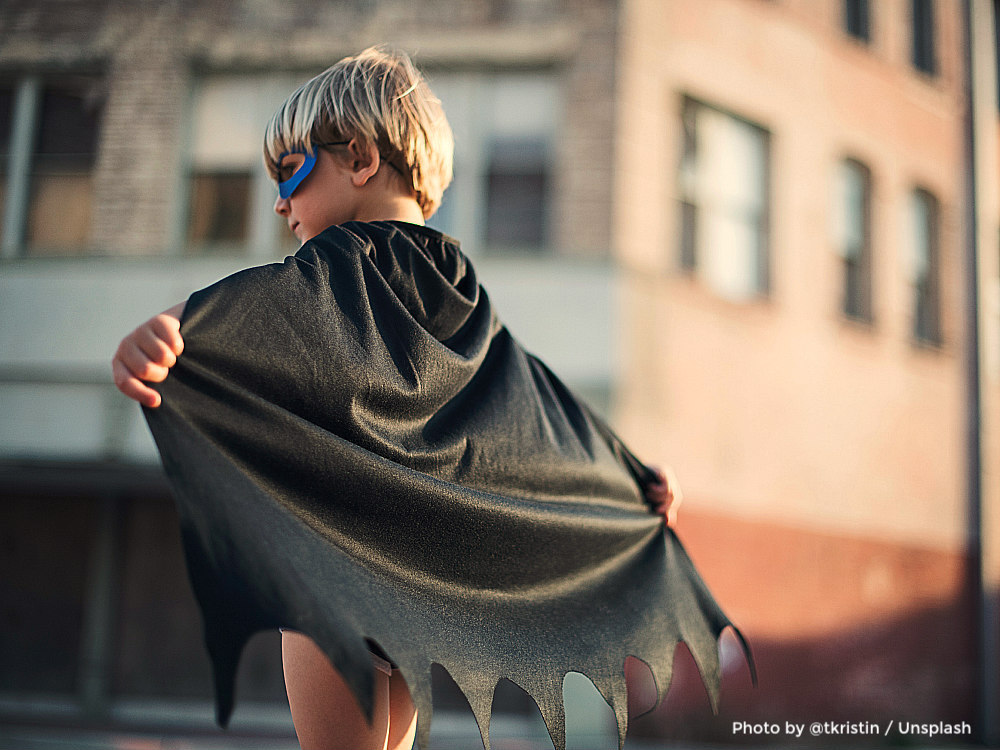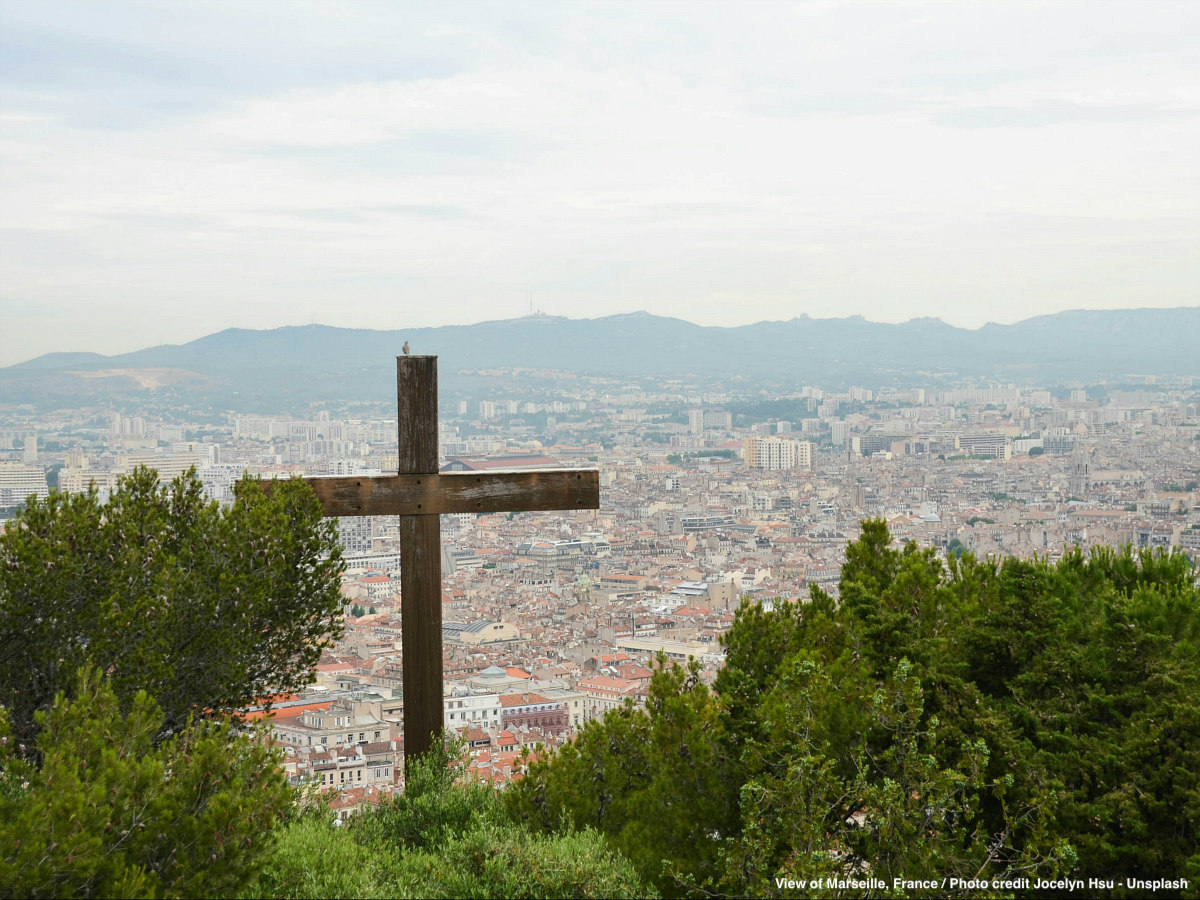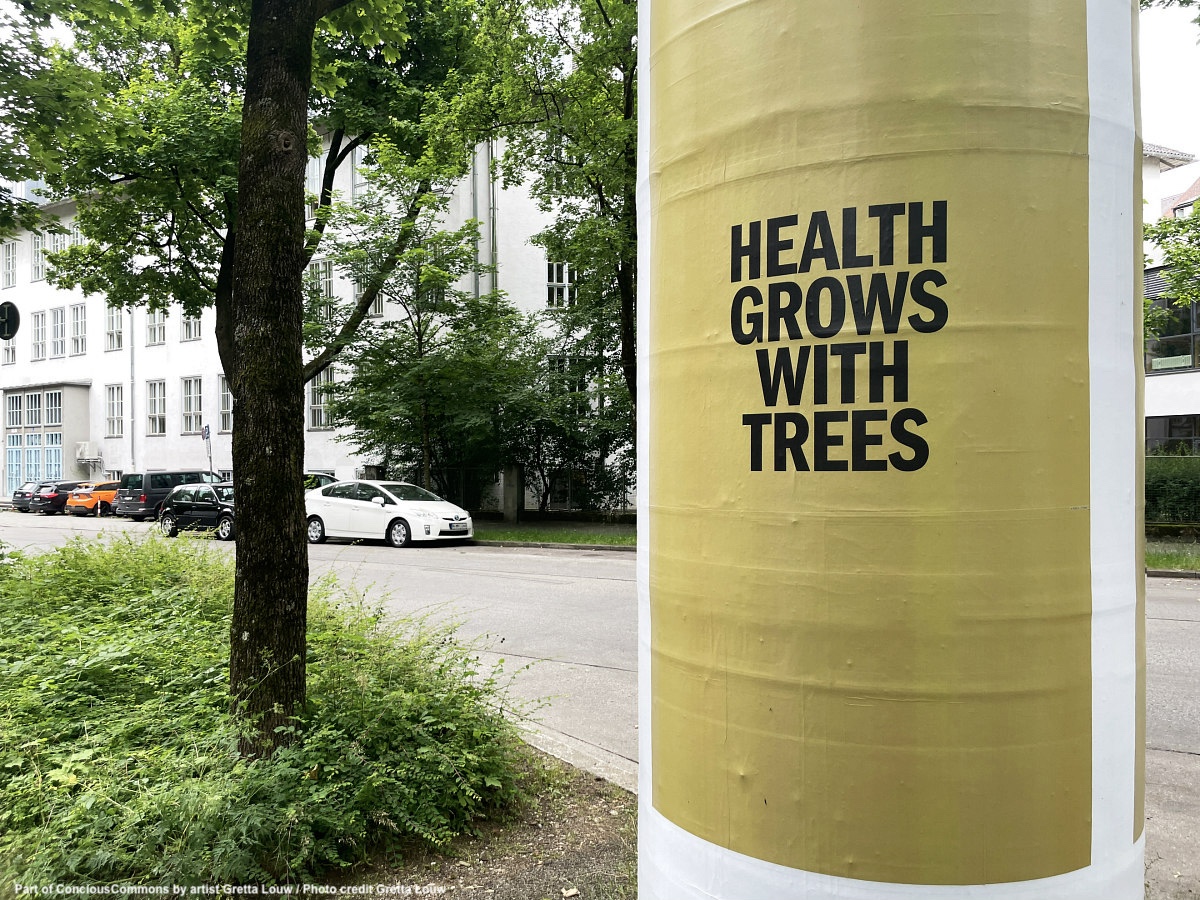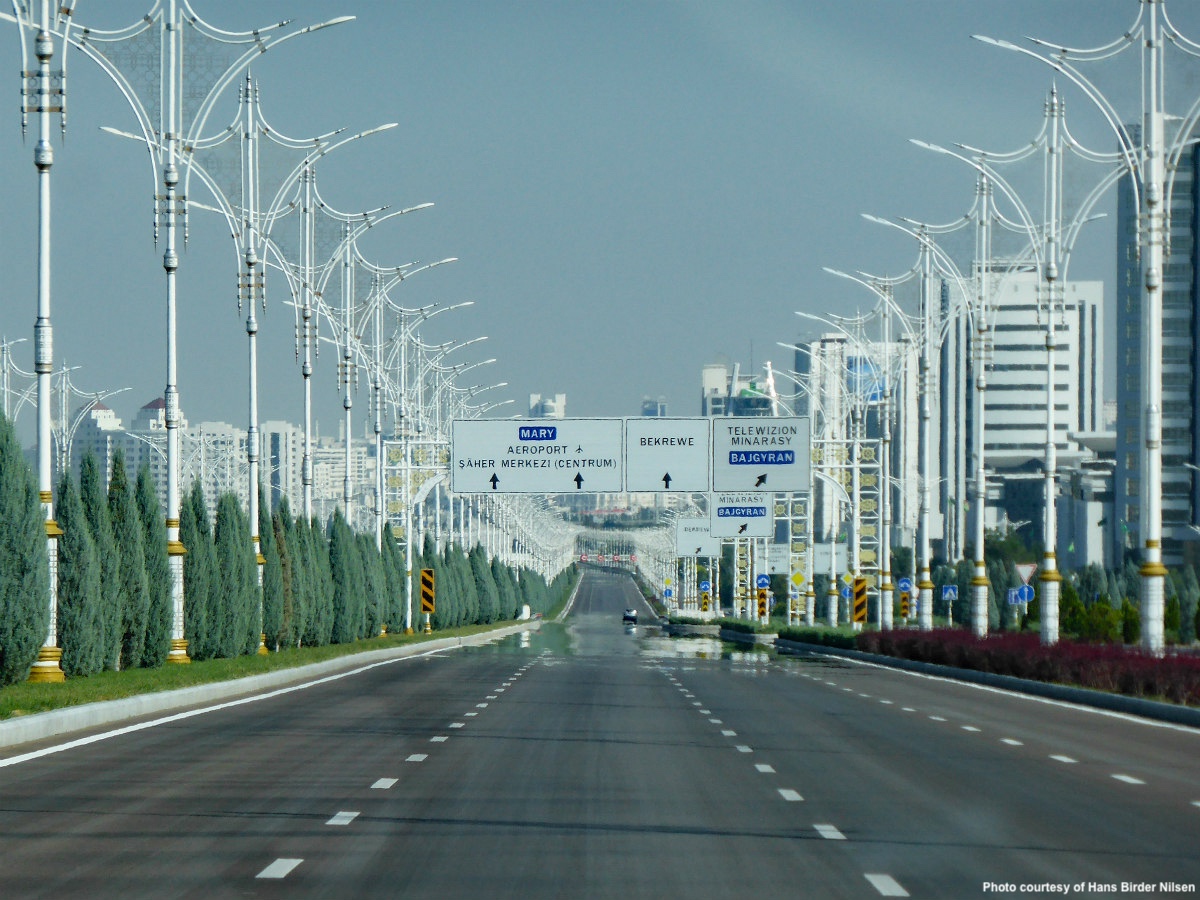Whether on foot, on a scooter or on a bike: kreuz & quer is an interactive walking and cycling game, a digital scavenger hunt, motivating children to active play on the streets of Munich while exploring their neighbourhood.
As the world gets more urbanized and more parents will raise children in cities, there is a growing concern that urban children spend more hours indoors under parental supervision, instead of getting more exercise and playing outdoors independently.
This concern has activated many initiatives for child-friendly cities around the world, mainly driven by those generations that actually can recall the great freedom of stepping out of their doors to play on the streets.
This is basically the last resource to keep those memories alive and bring some of that back to the current lack of accessible places and opportunities for physical activity and active play in their own cities.
Inspired by the initiative ‘Beat the Street’ in the city of Vienna, Munich has implemented in some neighbourhoods the search game for children called kreuz & quer. The task: Find the criss-cross boxes in the neighbourhood alone or in a team within a limited period of time. It requires physical exercise to hunt for points while beating the time.
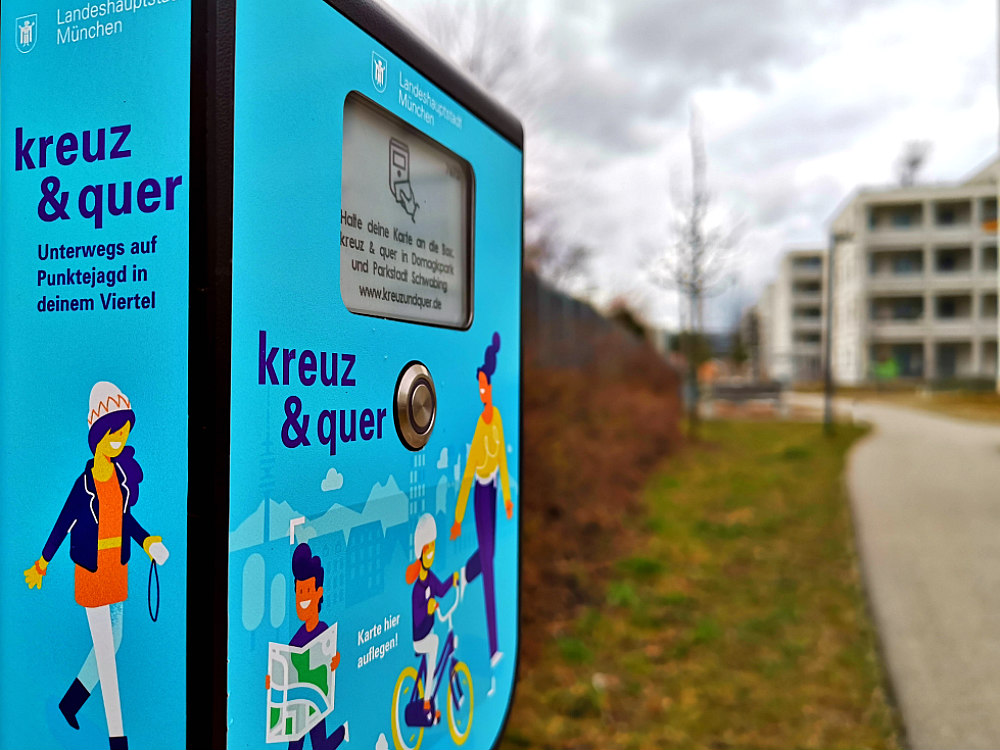
Children can simply get a chip card and a flyer for free from one of the designated pick up places in their neighbourhoods. Then they can start right away to look for the boxes. When found, they only need to hold the chip card close to the box to collect points. As soon as kids find at least two boxes within an hour, they get points. This process will advance them to a higher level in the game.
Overall, they can find a lot of blue and a few yellow boxes in their neighbourhood. The blue boxes are the simple play stations. To make it more exciting, the yellow boxes are secret boxes and thus much more difficult to find. If kids spot them, they get extra points. The rough location of the secret boxes is marked on the map within a yellow radius. It is worth looking at the map from time to time, because the yellow boxes will wander around the neighbourhood and the search will start again.
Participants can register online by using the number on the chip card to track their score and ranking. An app is not on offer as the game should be free of smart phones. Instead, the map in the flyer shows where the boxes are located.
Cities are cheering for ‘please come out and play’
kreuz und quer in Munich is part of the European projects called Metamorphosis and CIVITAS ECCENTRIC which aim at transforming neighbourhoods, with a focus on children and their mobility behaviour. The concept starts from the premise that when a neighbourhood has many children in its public spaces, this is a major indicator that the place is well designed as a sustainable neighbourhood. These projects also hope that children will approach the topic of mobility in a playful way and develop a consciousness for active mobility in the long term.
Furthermore non-profit organizations like the Bernard van Leer Foundation and KABOOM! as well as private initiatives are advocating to include a children’s perspective in urban planning to create urban environments for kids that are stimulating for physical activity and active play. They work under the premise that streets designed for children are great streets for everyone.
The researcher and Churchill Fellowship Natalia Krysiak has developed an interesting platform called Cities for play. There she reports about physical interventions, which can be implemented in the urban city contest to promote play and independent active mobility of children. She has spent one year travelling to cities to explore best practices for designing child-friendly, high density neighbourhoods.
In her hometown Sydney, being Australia’s most densified city, she sees an urgency to develop a comprehensive strategy for meeting children’s needs in the compact city.
Active play on the streets is a multiplier factor for a better city
kreuz und quer was first launched in 2019 and has been implemented for the third time this year in the relatively new Dogmapark and Parkstadt Schwabing neighbourhoods characterized by low traffic and plenty of public space, including a beautiful park. However, the city of Munich wants to see more kids playing on its streets walking and cycling as part of the city’s strategy for local mobility.
‘We have collected feedback from schools which were involved with kreuz & quer and the answer has been very positive’, explain Merle Schroer and Bianca Kaczor, both in charge of the initiative by the City administration.
The initiative has indeed persuaded more kids to take to the streets, even fostering social cohesion in the neighbourhoods. In addition, schools have also noticed a slight increase in children’s active mobility. More kids have commuted to school on foot or by bike, overcoming parents’ fear of car traffic.
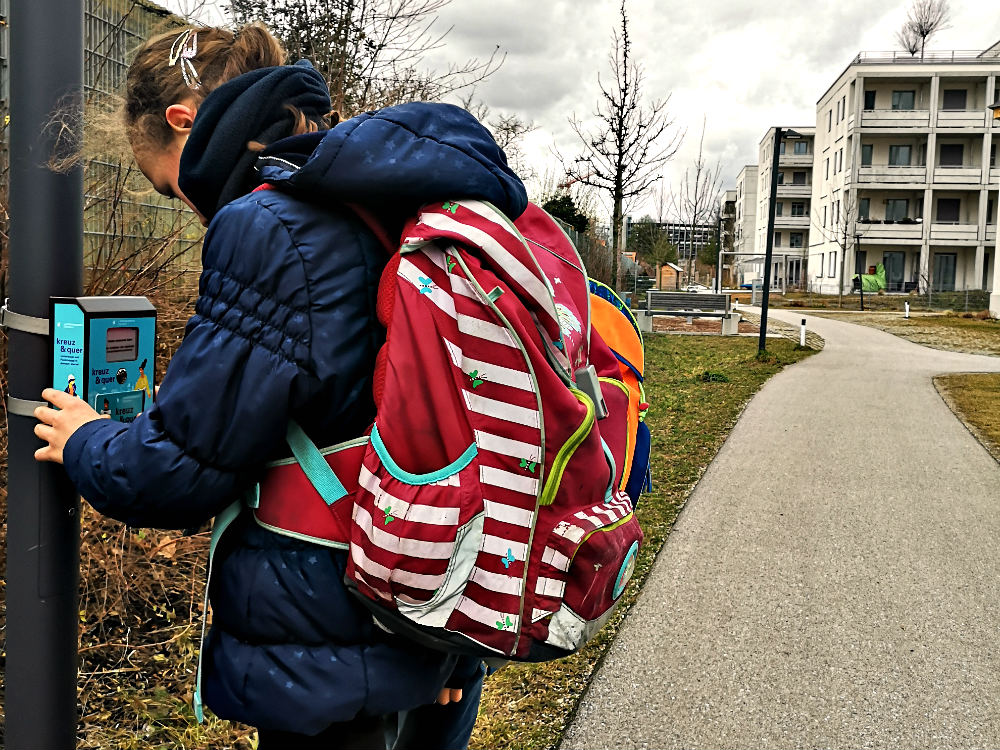
‘Active mobility in kids has become an important topic in cities’ points out Schroer. ‘Regarding traffic safety it is important to highlight that there is the so-called “Safety by Numbers” theory. The likelihood of a traffic accident with a specific means of transport (including foot traffic) decreases the more people use this means of transport in a city, as road users get used to being aware of it. The other side of this argument is that every time that a child no longer comes to school on foot or with the bike/scooter increases the probability of an accident. In contrast to the 70s when more than 90 percent of the children made their way to school without parents, today’s high car figures are a worrying development for traffic safety for children’s active travel to school’.
Due to the complexity of the topic the initiative kreuz & quer is working together with the Technical University of Munich to collect and analyse more data to reach conclusions on how to foster active mobility in kids and youngsters.
Why is active mobility or active play on the streets by children decreasing in our cities?
More cars in cities and consequently growing traffic volumes are to blame, claim many advocates for better cities. However, increasing parental anxieties are the elephant in the room.
As people in cities behave more individualistic and the avenues of anonymity have been paving our cities over the past several decades, one could not pretend that kids will call for friends in their neighbourhood and be out playing without being watched all the time.
Instead, parents take their kids to special enclaves called playgrounds for supervised-play. But letting our kids play in front of our doors would be so much easier and convenient for parents.
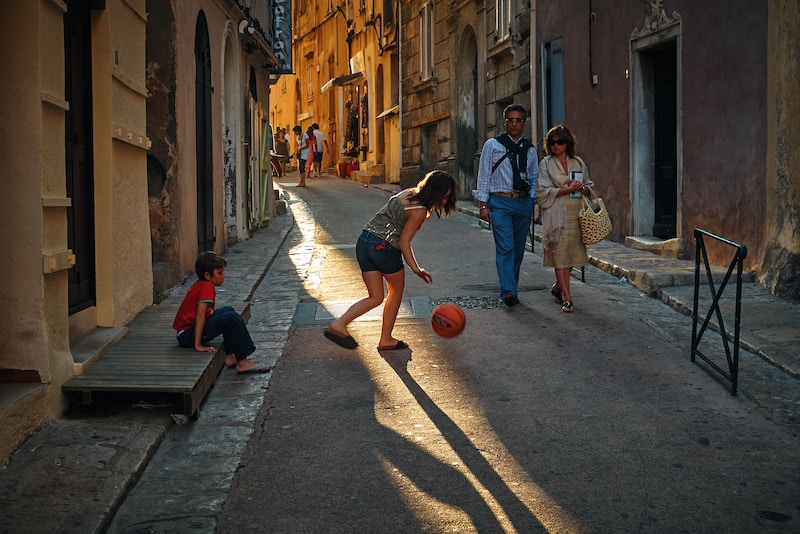
This believe brought Alice Ferguson and Amy Rose, two neighbours who enjoyed the privilege of playing outside in their childhood, to found Playing out in South Bristol. Now it has expanded throughout the UK. It is a grass-roots movement led by like-minded parents and residents to restore children’s freedom to play out in the streets and spaces where they live, for their health, happiness and sense of belonging.
Similarly in Vienna the initiative ‘WIEN LEBT…auf der Wohnstrasse’ by space and place is reviving ‘residential streets’ considered by law a public space made available to citizens to use. They encourage citizens to take ownership of their streets.
I grew up in the 80s as cars have already heavily taken over the streets in cities. In terms of criminality, statistics state that streets were much more dangerous then than they are today. However, my parents granted me the valuable experience to active play on the streets.
I never felt bored. I would call my friends and ask them to come out. Together we were always looking for new things to do boosting our imagination and creativity.
Nowadays, the streets of my neighbourhood in my hometown are much wider and safer but without kids playing together outside in sight.
A car-free street could help parents not feel either irresponsible or over-protective, however I believe parents have to overcome complex barriers of fear.
The city of Munich is right about challenging the ways in which children could access streets independently and implementing creative ideas like kreuz & quer. I hope parents won’t miss the opportunity to let kids reclaim the lost art of playing outside and experience active play on the streets on their own terms.
